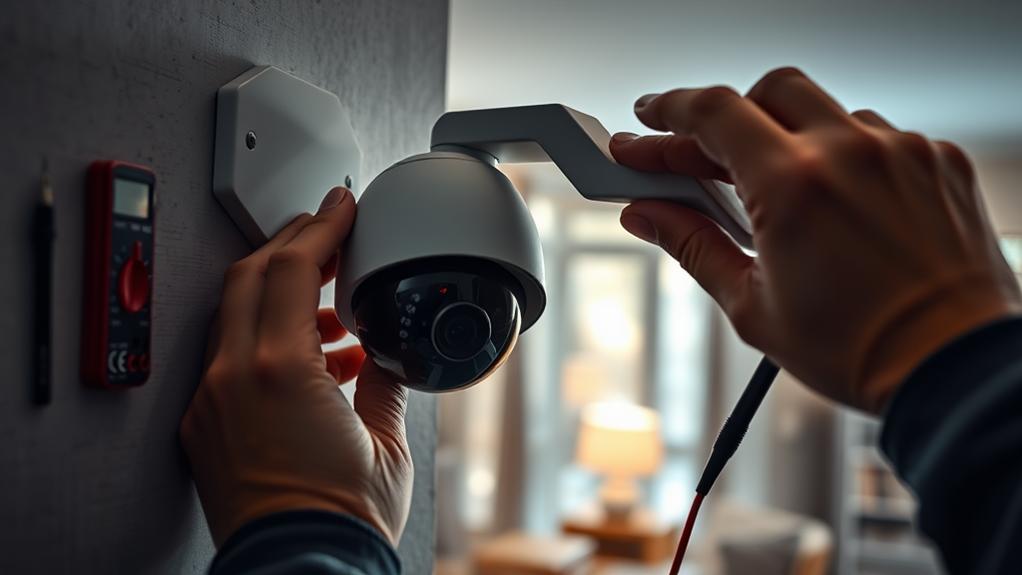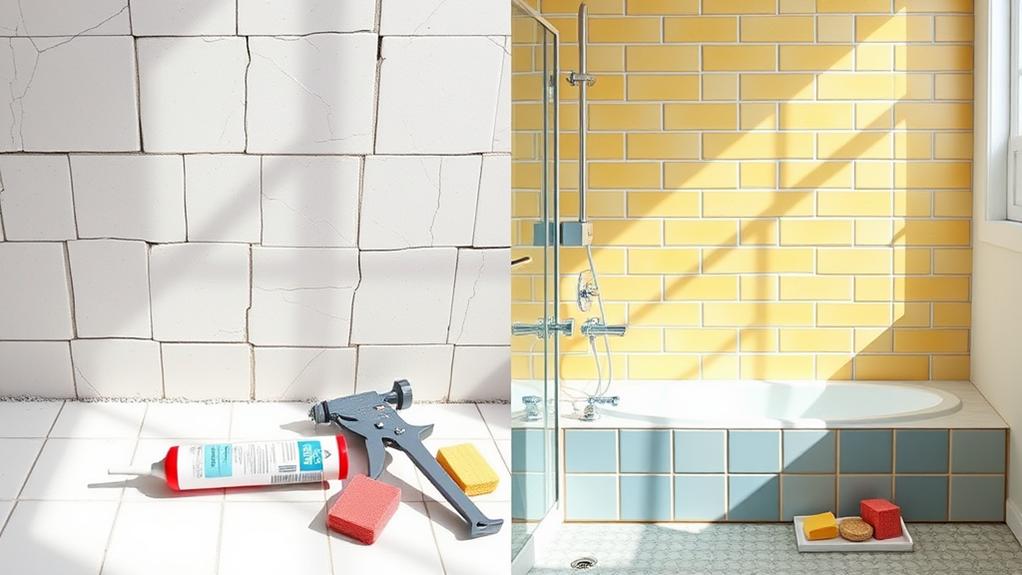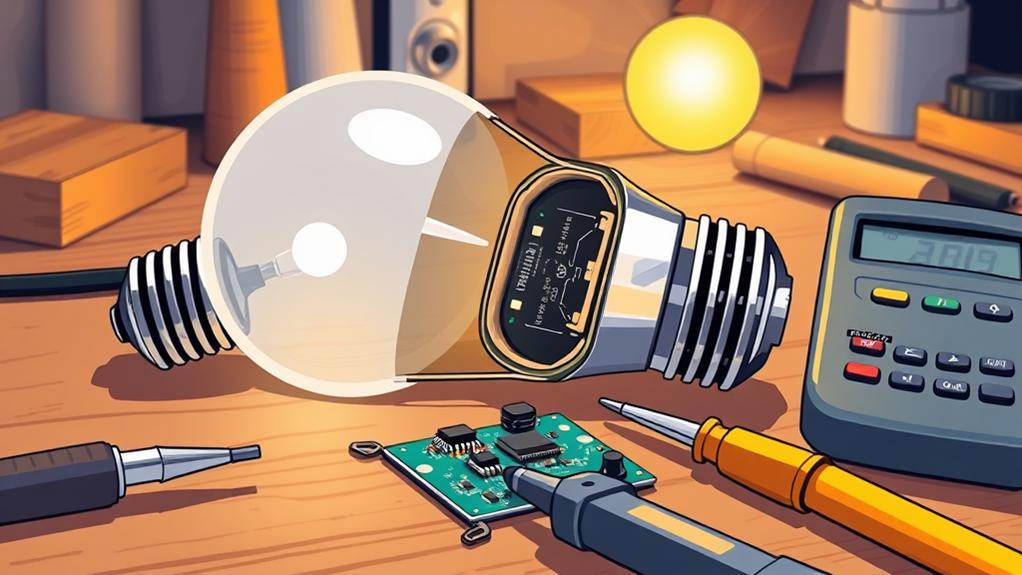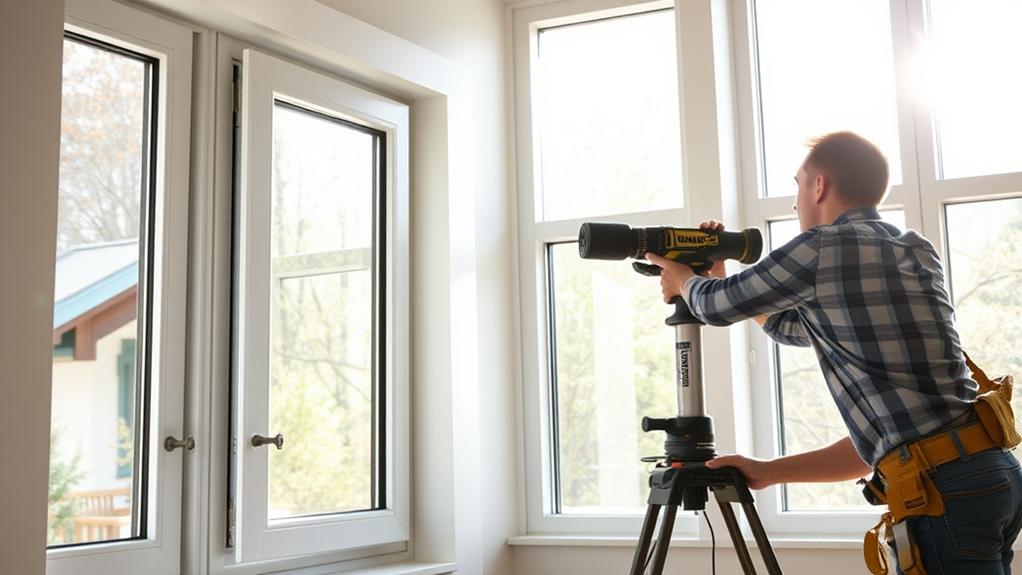When you identify wiring problems, gather tools, and follow safety measures, you're on the path to fixing common smart home wiring issues efficiently. Understanding the nuances of your smart home setup can save you time and stress, but what happens when you encounter a problem you can't quite figure out? Tackling these issues not only enhances your home's functionality but also empowers you to take control of your environment. Let's explore the essential steps you need to take to guarantee your smart devices work seamlessly again.
Identify Common Wiring Problems
When you're setting up your smart home, it's crucial to identify common wiring problems that could disrupt your devices. One major issue is outdated wiring. If your home has wiring from decades ago, it mightn't support the electrical load required by modern smart devices.
Look for frayed wires or loose connections, which can cause intermittent power issues and lead to device malfunctions.
Another common problem is improper grounding. Without proper grounding, your devices may be susceptible to surges and could even be damaged. Check the outlets and confirm they're grounded correctly.
Additionally, look out for overloaded circuits. If you notice frequent tripped breakers, it's a sign that your circuit isn't handling the load well, which can affect your smart home's performance.
Lastly, pay attention to voltage fluctuations. If your lights flicker or your devices reset unexpectedly, it could indicate wiring issues that need addressing.
Tools Needed for Repairs
To tackle any wiring issues you've identified, having the right tools on hand can make all the difference. Without the proper equipment, you might find yourself struggling to complete even the simplest repairs.
Here's a quick list of essential tools you should gather before diving in:
- Multimeter: This handy device helps you measure voltage, current, and resistance, allowing you to diagnose electrical problems accurately.
- Wire Strippers: These are essential for removing insulation from wires without damaging the conductor, making it easier to make connections.
- Screwdrivers: A good set of screwdrivers, both flathead and Phillips, is necessary for loosening and tightening screws on outlets, switches, and junction boxes.
With these tools at your disposal, you'll be well-equipped to handle most smart home wiring repairs.
Don't forget to wear safety gear, like gloves and goggles, to protect yourself while working. Once you have everything ready, you'll feel more confident tackling those wiring issues head-on.
Step-by-Step Repair Techniques
Successfully fixing smart home wiring issues requires a clear, methodical approach. Start by identifying the problem; is it a non-responsive device, flickering lights, or connectivity issues?
Once you've pinpointed the issue, gather your tools and materials.
Next, turn off the power at the circuit breaker to guarantee safety while you work. Use a voltage tester to confirm that the power is off before proceeding.
If you're dealing with a device that won't respond, check the wiring connections and verify everything is securely connected. Loose wires can often lead to functionality problems.
For flickering lights, inspect the light fixture and replace any burnt-out bulbs. If the issue persists, examine the wiring in the junction box for damage or loose connections.
When addressing connectivity issues, verify your Wi-Fi signal is strong and that devices are properly paired.
Once you've made the necessary repairs, restore power at the breaker and test your devices. If everything's functioning as it should, you've successfully resolved the issue.
If problems continue, consider consulting a professional electrician for a more in-depth examination.
Safety Precautions to Consider
Before diving into any smart home wiring repairs, it's crucial to prioritize safety. You might be enthusiastic to get started, but taking a few precautions can prevent accidents and guarantee a smoother process.
Here are three key safety tips to keep in mind:
- Turn Off Power: Always cut the power at the circuit breaker before you start any work. This simple step can protect you from electrical shock and keep your devices safe.
- Use Proper Tools: Invest in high-quality tools designed for electrical work. Insulated tools can prevent accidental shocks, while wire strippers and multimeters assure you're handling wires correctly.
- Wear Protective Gear: Don't overlook the importance of safety gear. Wearing safety goggles and rubber gloves can protect you from flying debris and electrical hazards.
Testing Your Repairs
Once you've completed your smart home wiring repairs, it's essential to test everything to verify your setup functions correctly. Start by checking for any visible signs of issues, like loose connections or frayed wires. Next, power on your devices to confirm they're receiving the correct voltage and functioning as intended. Use a multimeter for a thorough check—this will help you validate that the wiring is doing its job.
Here's a simple table to help you track your testing process:
| Device | Test Result | Notes |
|---|---|---|
| Smart Light | Working | Adjusted brightness |
| Thermostat | Not Responding | Check wiring connections |
| Smart Plug | Working | Connected to Wi-Fi |
If a device isn't working, retrace your steps to identify the problem. This methodical approach will save you time and frustration. Once all devices pass the tests, you can enjoy the benefits of your smart home setup, knowing everything is functioning at its best. Remember, thorough testing guarantees your efforts were worthwhile and your home is ready for seamless automation.
When to Call a Professional
Testing your smart home devices is a great way to guarantee everything is running smoothly, but sometimes, issues can persist despite your best efforts.
When you find yourself in a situation where troubleshooting isn't enough, it's time to call a professional. Here are three key signs that indicate you should seek expert help:
- Persistent Problems: If you've tried multiple solutions and the same issue keeps cropping up, a professional can identify underlying wiring problems that you may have missed.
- Complex Installations: If your smart home setup involves intricate wiring or multiple interconnected devices, a professional can ascertain everything is installed correctly and safely.
- Safety Concerns: If you notice sparks, burning smells, or feel unsure about handling high-voltage systems, don't hesitate to contact an expert. Your safety should always be your top priority.
In these scenarios, a qualified technician can save you time, stress, and potentially costly repairs down the line.
Investing in professional assistance not only resolves your issues but also gives you peace of mind knowing your smart home is in good hands.
Conclusion
By tackling smart home wiring issues yourself, you can save time and money while gaining valuable skills. However, it's crucial to know your limits; some problems are more complex than they seem. Notably, many DIY enthusiasts believe that most wiring issues stem from poor installation practices rather than faulty devices. So, if you find yourself stuck or overwhelmed, don't hesitate to call a professional. It's better to guarantee safety and proper functionality than to risk a bigger problem down the line.











